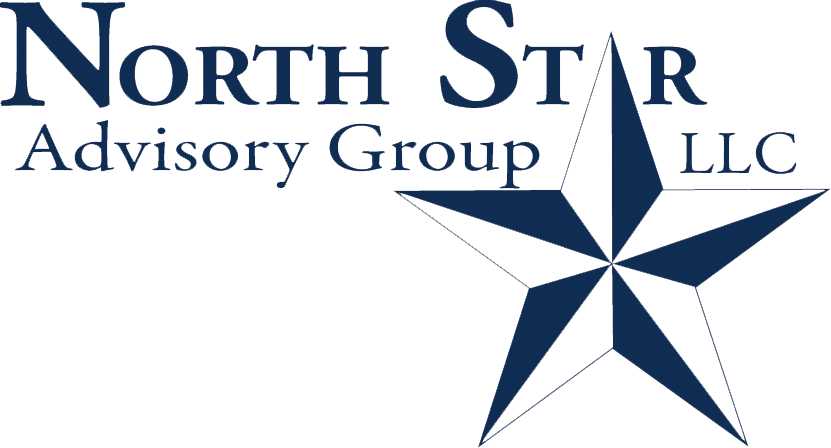Each month we ask clients to spend a few minutes to read through our newsletter with the goal of raising their investor IQ. To properly address client questions on bubbles and their potential impact on the markets, this month’s Timely Topics is a long one. Enjoy!
- Should you hold off on that big purchase?
- The market is positioning for higher highs
- Triple win for manufacturing, sales & earnings
- Is now the time to invest into ESG?
- NSAG hires Investment Analyst Brian Duffield
- Where will the equity markets go next?
Should you hold off on that dinner or purchase?
Consumers around the globe are headed into a perfect storm of spending this summer.
As social distancing restrictions begin to loosen, socializing will become more common, along with the expenses that come with it. To prepare for this new environment, households should identify the needs they are trying to satisfy with certain behaviors and come up with a new strategy to meet those needs. For example, spending money on expensive dinners or many smaller lunches out may have more to do with the need for socializing versus the meal itself. Focus on a budget-friendly strategy for meeting this need, such as inviting friends over for a home-cooked meal instead. Cautiously adding expenses to a budget will help prevent excess spending and keep the positive savings habits that have been developed over the past year.
Simultaneously, we are experiencing a worst-case scenario of supply/demand for bigger ticket purchases like housing, autos, appliances, furniture, cabinets, lighting…
Economics 101 clearly states that when you have a limited number of goods or widgets to sell, you can raise prices to bring the demand into equilibrium. Not only have companies been raising prices, but they have also been cancelling orders from smaller clients or lower prices to push sales to larger clients at higher prices.
Technology advancements allowed companies to continue to drive down levels of inventory prior to COVID. However, extreme low levels of inventories left many companies shorthanded when being faced with a once in a century event like a post-COVID spending spree. Years of fighting inflation and the high costs of EPA compliance has been achieved through a global supply chain of materials and production that has left little industrial production in the United States.
Housing… Over a decade of significant under production of homes across the country has caused a housing boom that will not stop any time soon. However, the short-term impacts of lumber prices should subside in early 2022 as lumber mills get their production back online. Concerns of moving during COVID and during a hot housing market has also brought the inventory level of homes for sale to record lows which should also start to soften up in early 2022. These impacts and many others are resulting in buyers offering 15-30% over asking prices. While we don’t see a crash in home prices, we do see prices softening up in the next 12-18 months. Therefore, if possible, it might make sense to delay this big purchase.
Autos… Cars these days are basically rolling computers and the microchips required to make modern combustion engine cars can cost more than the steel for the rest of the car. Microchip production has been impacted by labor issues in China and material shortages. Even a basic material like foam used in seats is on short supply and causing additional production outages. We will not get very far in cars without seats and microchips!
From appliances, furniture, cabinets, lighting, PVC… the list of items impacted goes on and on. Our recommendation to clients is twofold. First, be prepared for sticker shock when you are going to purchase items. If it is a small purchase, you can probably absorb the increase. If you are replacing the air conditioner in August, your short-term pain will help justify the increased in cost if you can even find a unit to install. Plan ahead where possible for the labor and price negotiations. Second, larger purchases like homes and autos should be approached with more caution. A shift we are seeing for 2021 is that after a more in-depth conversation about the purchase of a new home, many clients are now putting plans on pause. Auto purchases need to be approached more carefully as well. Not only has the price of cars shot up but the resale value of your used car and lease has also gone up. If your lease is ending, don’t just trade it in, consider negotiating with another dealership to see if you can get a couple thousand dollars of equity out of the lease so they get another car on their lot.
Of course, do not hesitate to contact us if you have questions.
Inflation is already here
Globalization is a major cause of the current inflation cycle and will also be the solution. However, if we will get into an extended trade war with less globalization, there will be less supply of goods from international markets and many of the current high prices will be here to stay. President Biden’s $2 trillion spending program is adding additional inflationary pressure. We are already in the beginning of a temporary inflationary cycle.
How did we get here and what will it take to bring things back into balance? The following are just a few of the reasons for the decline in the number of widgets available for sale.
- In fear of a protracted recession, companies discounted inventory and blew out what little remaining widgets they had. Rebuilding of inventories will take time and holding inventory costs companies profitability each quarter.
- Tariffs. The United States and many other countries increased their tariffs on many commodities and widgets during 2016-2020. Over 60% of goods leaving the US to China or China to the US are experiencing 20% higher prices due to tariffs. Tariffs on lumber leaving Canada to the US have recently been reduced, but they have not been total removed.
- Years of immigration reform have put a dent in the work force with significant implications for sectors like hospitality, restaurants, landscapers, farmers and construction to name a few. A sound plan for immigration would not only increase the available labor force, but also provide an increase in the consumption from the domestic population.
- In a search for lower labor and material prices, globalization has pushed production of goods and services overseas. Technology continues to bring down the labor costs as many factories and restaurants look towards robots to replace expensive human labor.
- The burning Cuyahoga River in 1969 had led to a national outcry and creation of the EPA in 1970. The EPA creation was a major contributor to the globalization movement and the push of production of goods to other counties. Many Americans have had a “not in my backyard” mentality for production, yet they still continue to buy goods containing harmful chemicals produced elsewhere. The EPA has had a huge positive impact on the health of the land. However, it leaves our country with a harsh decision to manufacture more items in the United States with greater control, but a significant increase in the cost of goods produced or manufactured overseas and have less control over the supply chain. Over time, a new balance will be found and new technologies will help to modernize manufacturing techniques, waste and environmental impacts.
High prices will bring in new supply and as supply ramps up, prices will fall. We are not witnessing a repeat of the early 1980s. Technology is the best tool to fight inflation and we will start to see an easing of inflation as we head into 2022.
Triple win for manufacturing, sales & earnings
Quarterly earnings results have continued to surprise and we have not even started the best months of the year yet. In Mid-April, we received a slug of economic data in the form of Jobless Claims, Retail Sales, Empire Manufacturing, and Philly Fed Manufacturing. The results were not just good, they blew the doors off. With the exception of Continuing Jobless Claims, which still came in right near their post-pandemic lows, every other report came in much stronger than expected. It's still early, but what could be more impressive than the results themselves is the fact that the yield on the 10-year is actually lower now than it was before the releases. A lower 10-year yield is good for the stability of the overall market and will take some downward pricing pressure off the hyper growth names.
Is now the time to invest into ESG?
U.S. attitudes towards environmental policy around protecting the environment and global climate change have steadily been increasing over the last decade. During the same time, inquiries into Environmental, Social & Governance (ESG) investing have increased from North Star’s clients. ESG investing focuses on companies that have a higher focus on with higher scores related to Environmental, Social & Governance. Due to the variety of investment options and personal objectives with ESG investing, it is important to start with a basic understand on the many ways to invest into ESG.
One of the ways to invest into ESG is through sustainable sector funds. These funds focus on "green economy" industries like renewable energy, energy efficiency, environmental services, water, infrastructure, and green real estate. Green economy companies can be found across a variety of conventionally defined sectors, and, according to one estimate, they constitute 5% of global market cap. Performance for many focused ESG funds like these have been negative for a decade with sky high performance over the last 6 months. This is a performance ride that most investors cannot stomach, and we have recommended against.
Diversified ESG funds exchange a milder ESG exposure to obtain a well-diversified portfolio. As a result, they tend to have low active risk and tracking error relative to the broader market. The right balance between ESG exposure and diversification is a matter of personal preference. With so many options available, there's likely a fund that aligns with your preference.
If you would like to learn more, we have an article that we can share that will walk you through the basics of EGS investing. Then North Star can help you look closer at how different funds approach ESG investing so we can appropriately weigh the pros and cons of each option.
NSAG hires Investment Analyst Brian Duffield
NSAG continues to make progress on a multi-year strategy to enhance our clients’ interaction with North Star. NSAG expands our internal research and analysis with the 2021 hiring of Brian Duffield as an Investment Analyst. Initially, Brian will be responsible for coordinating client meetings, including scheduling, collecting and analyzing necessary information. In addition, he will prepare client’s investment reviews and retirement cash flow projections, as well as will assist with the overall client relationship. As Brian’s experience grows, NSAG will leverage his analytical skills to strengthen client portfolios.
Brian graduated from Ohio University in 2020 with a bachelor’s degree in Business Administration with a concentration in Finance & Analytics. With North Star’s guidance, Brian has created an ambitious multi-year professional certification program. Brian is currently working on his certification to become a Financial Paraplanner Qualified Professional™. During the fall of 2021, Brian will sit for the Chartered Financial Analyst® (CFA) Level I. Over the coming years, Brian will work to finish the next two levels of the CFA certification and then potentially move towards the Certified Financial Planner™ (CFP) certification.
Brian lives in Elyria. Outside of work, he enjoys golfing, going to the gym and is an avid movie watcher. Brian’s favorite thing to do on the weekends is eating at new restaurants with his friends.
Where will the equity markets go next?
We are seeing a psychological shift in society from despair to hope. More individuals are considering getting the COVID vaccine than were two months ago and many families are planning additional spending as they prepare to settle into a reopening world. In December 2020, we were seeing a growing probability of the S&P 500 hitting 4,200 by the end of the year 2021. The breadth of the recovery we are seeing for the balance of 2021 along with some technical analysis, may see the S&P 500 exceed these numbers. We are now slowly seeing analysts raising their forecast over 4,200. While the path forward will not be a straight line, we expect any pullbacks to be modest and focused on areas of bubbles. The continued rotation from growth to value is likely to continue for at least the next year.
It’s now clear that there is virtually zero risk of a double-dip recession. We still believe we are in a secular bull market, which started in 2010 and typically lasts around 15-20 years.
We are passionately devoted to our clients' families and portfolios. Let us know if you know somebody who would benefit from discovering the North Star difference, or if you just need a few minutes to talk.
As a small business, our staff appreciates your continued trust and support as we all work through these stressful and trying times for our country and world.
Please continue to send in your questions and see if yours gets featured in next month’s Timely Topics.
Best regards,


Mark Kangas, CFP®
CEO, Investment Advisor Representative


